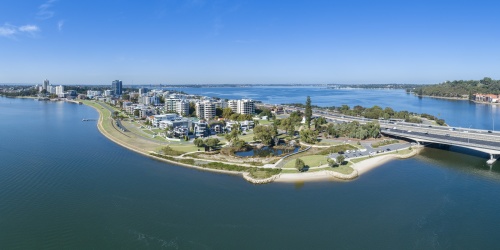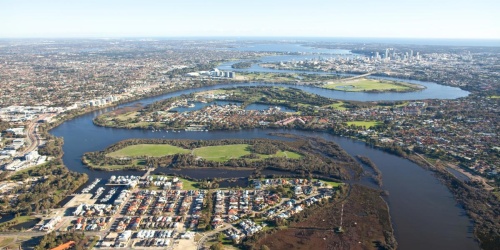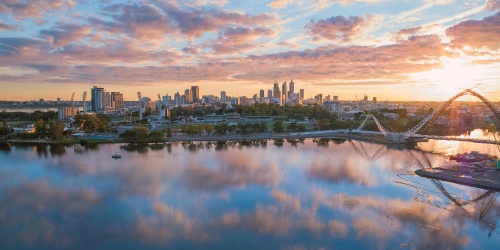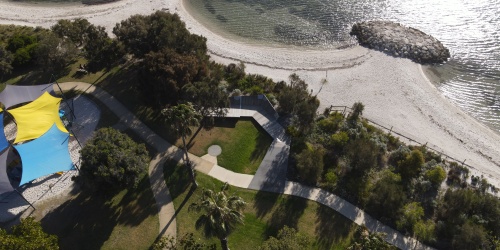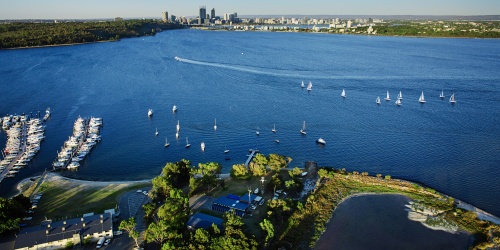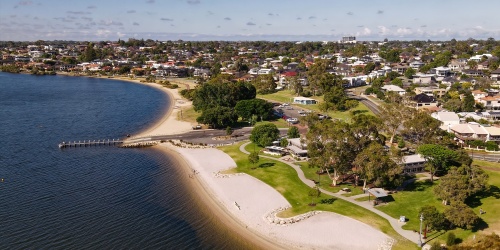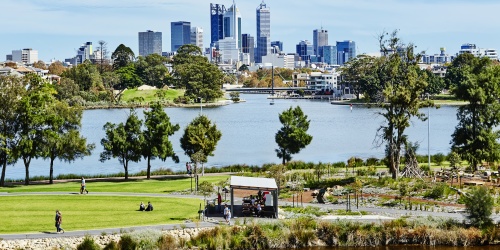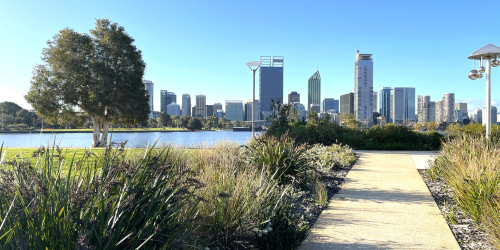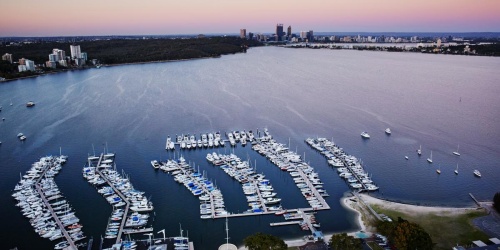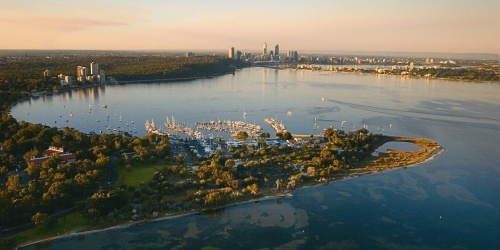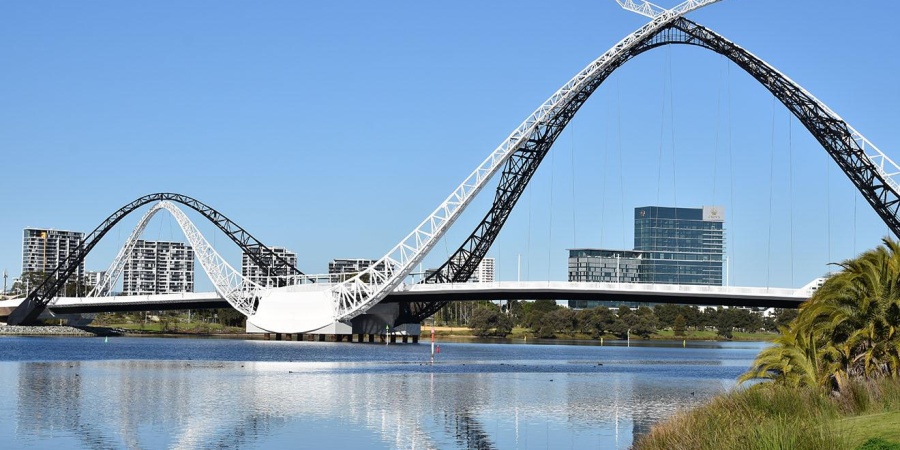
Matagarup Bridge in the Swan River
This page explains how to lodge an application for development within the Swan Canning Development Control Area (DCA) under Part 5 of the Swan and Canning Rivers Management Act 2006 (the SCRM Act).
A development application is required in the following situations:
- a material change of use, for example a café to a bar, or a public jetty to a commercial (or partially commercial) berth
- leaseholders proposing new structures or external changes to existing buildings within their lease area where the cost is $500,000 or more, for example building upgrades or expansions
- works by a government authority (generally the local government) where the cost is $5,000,000 or more
- the permanent construction, installation, or expansion of a structure within the River reserve or on land by someone who is not a leaseholder or a government authority (except if it is for erosion control)
- examples on the River reserve may include a new jetty, expansion of an existing jetty, or the installation of a fixed floating pontoon
- examples on land may include commercial development on public land where a lease does not yet exist (such as a new café or restaurant), or a leaseholder wishing to expand and develop outside of their existing lease area, or a commercial operator wishing to install a ticket booth on the foreshore
Anyone proposing any of the above on a lot that is wholly within the Swan Canning Development Control Area will require a development approval under Part 5 of the SCRM Act.
Below is a step-by-step process map of what to expect if you submit a development application to DBCA.
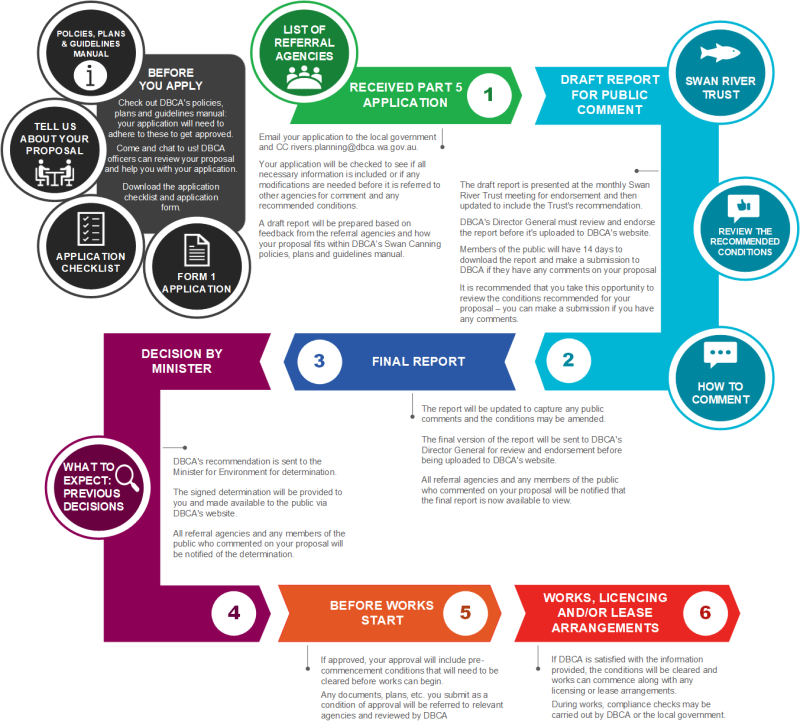
Works, acts or activities that are not listed above may be approved under a permit. Please refer to the permit applications or commercial activities permits pages for more information on these types of applications.
Complete the online enquiry quiz or send us an email to tell us about your proposal, and we can let you know what kind of approval you’ll need and help you prepare your application. Be sure to also check out DBCA’s policies, plans and guidelines as your proposal will be assessed against these. Otherwise, scroll down to the How to apply section below.

How to apply
- Complete the Form 1 Application for Approval of Development (available for download below).
- Email your completed application form and checklist, and any additional plans or information, to the local government.
- CC rivers.planning@dbca.wa.gov.au in the email so that DBCA is aware that the application has been submitted.
The local government has seven days to send the application through to DBCA.
Please note that DBCA may request additional information, or you may be required to modify your proposal to address environmental or amenity factors, community values, shared use, and safety considerations. Before you apply, it’s recommended that you review DBCA’s policies, plans and guidelines manual. Your application will be assessed against these documents to ensure the proposal is consistent. You can also download the application checklist (available below) to confirm what details to include in your application (this checklist is also built into the Form 1).
Please contact us if you would like assistance with your application or would like to discuss your proposal further. We can also help identify which policies would be most relevant to the assessment of your proposal, or visit our policies, plans and guidelines manual page.
Application checklist
The following information should be included in your development application (a copy of this checklist is included on the application form and is available in the downloads section below):
- Completed application form, including written consent of the landowner(s) (DBCA will organise landowner consent for the River reserve)
- Additional information including details of the proposed development (including the existing and proposed use of the site and proposed hours of operation) and addressing any relevant issues identified in the policies
- Plans and specifications of the proposed development showing:
- current and proposed levels (contours at no greater than 1 metre intervals), including retaining structures and fill requirements
- the location, metric dimensions, materials, finishes and type of all existing and proposed structures, including services
- sections through the site
- the nature and extent of any open space and landscaping proposed
- proposed external lighting and signage
- any watercourse flowing through the site
- position of any large trees or on-site vegetation, clearly marking vegetation to be retained and removed
- the existing and proposed means of access and movement for pedestrians and vehicles
- Plans, elevations and sections of any building or structure proposed to be erected or altered and/or any building or structure to be retained
- Site plan of the lot showing the development location in relation to:
- adjacent roads
- rivers, creeks, springs and wetlands
- nearby conservation areas and/or Bush Forever sites
- floodway and floodplain boundaries
- land reserved for Parks and Recreation under the Metropolitan Region Scheme.
- Information on the availability of drainage and sewer
- Information on any impacts to heritage sites or protected areas and subsequent approvals (if required)
- Information regarding potential acid sulfate soils and/or contamination
- If the proposed development is likely to disturb potential and/or actual acid sulfate soils or a contaminated site, a preliminary investigation is required, and the results included with this application
- Details of the proposed construction methodologies
- Geotechnical information
- Operational details (where relevant) for example for a proposed cafe
Larger developments should also include:
- photo montages showing the development in relation to the river and foreshore landscape
- information on the impacts of parking, noise and traffic generated by the proposal
- details of stormwater management incorporating water sensitive urban design principles
- details of any dewatering proposed during construction including the expected volumes, water quality, method of disposal and sampling regimes in accordance with DBCA’s Policy 50 – Planning for dewatering affecting the Swan and Canning Development Control Area
- any specialist studies and/or management plans required to support the application such as traffic, heritage, environmental, engineering, landscaping or urban design studies
If insufficient information is provided with the initial application, further information will be sought from the applicant. If the required information is not provided, the application will be returned. DBCA is unable to process the application without the completed (and correct) application form and relevant information.
Riverbed lease and River reserve licence
DBCA will let you know if your development will require a Riverbed lease or River reserve licence during the application process.
Development that results in exclusive use
Development in the River reserve that results in exclusive use may require a River reserve lease.
Development that results in non-exclusive use
Development in the River reserve that will result in non-exclusive use and is contractual in nature may require a River reserve licence.
Frequently asked questions
How long will it take for my application to be determined?
The timeline for assessing development applications is variable and depends on the quality of information provided with the application and how complex the proposal is.
The Part 5 development assessment process is likely to take 4-6 months from the time that a valid application is lodged.
Key aspects of the approval process include:
- local government forwards the application to DBCA (7 days)
- referrals are sent to relevant agencies (42 days)
- first draft report preparation
- consideration at the Swan River Trust Board meeting (board meetings are held once a month and the agenda close is two weeks prior to the meeting)
- advertising on DBCA’s website of draft report to allow the public to comment on the proposal (14 days)
- amendment of draft report if responses are received during advertising
- the Swan River Trust Board may be consulted on the responses received during advertising
- review and finalisation of the report
- Ministerial decision
Please consider the above when planning to submit a development application.
What if I don’t agree with the conditions on my development approval?
If you have received an approval and do not agree with one (or more) of the recommended conditions, you can submit a request for reconsideration to the Minister.
To submit a request for reconsideration of a condition please contact DBCA in writing at rivers.planning@dbca.wa.gov.au within 28 days of receiving notification of your approval and include:
- Title your email “Request for reconsideration of conditions” with your approval number (the file number written on the determination)
- Attach a copy of, or a link to, the determination (your approval) signed by the Minister
- Which condition(s) you do not agree with and why
The Minister may respond with a decision where:
- No changes are made to the condition(s) in question
- The condition(s) is altered
- The condition(s) is removed
If the condition(s) in question has been altered or removed, then DBCA is required to notify all agencies who were referred the application and must publish the amendment on its website.
How long will my approval last?
Development approvals determined under the SCRM Act do not expire, but will include the following condition:
Approval to implement this decision is valid for three (3) years from the date of this approval. If substantial on-site works have not commenced within this period, a new approval will be required before commencing or completing the development.
This means that your approval will expire if no works have started within three years after the date that the approval was signed by the Minister. If your approval expires, then a new Part 5 development approval will be required.
What if I can’t commence works within two years? What if I want to make a change to the plans that were approved?
If your circumstances change and you require an extension to your approval, or you need to slightly alter the plans that were approved as part of your proposal, then you will need to apply for a Variation of extension of approval under Section 84 of the SCRM Act.
To apply for an extension or minor variation, please contact DBCA in writing at rivers.planning@dbca.wa.gov.au and include:
- Title your email “Request for extension/variation” with your approval number (the File Number written on the determination)
- Attach a copy of (or a link to) the determination signed by the Minister (your approval)
- Advise whether you are applying for a minor variation or an extension
- If applying for a minor variation, then include details on what changes you are proposing as well as updated plans to reflect these changes
Based on the information provided, you will be advised if your request can be processed under Section 84 of the SCRM Act. If your proposed variation is not considered ‘minor’, then you may be required to apply for another Part 5 development approval.
Please be aware that a request for extension will grant no more than 12 months extension and can only be given once for any approval. After that time has expired, a new Part 5 development approval will be required.
Please refer to the Swan River Trust Guideline SRT/A1 – Variation or extension of approval applying Section 84 for information on what is considered a ‘minor variation’ and a flow chart of the Section 84 process. Visit our policies, plans and guidelines manual page for more information.
Still have questions?
Refer to the Frequently Asked Questions page for more information. This page includes information about application fees, landowner consent, referral agencies and more.
